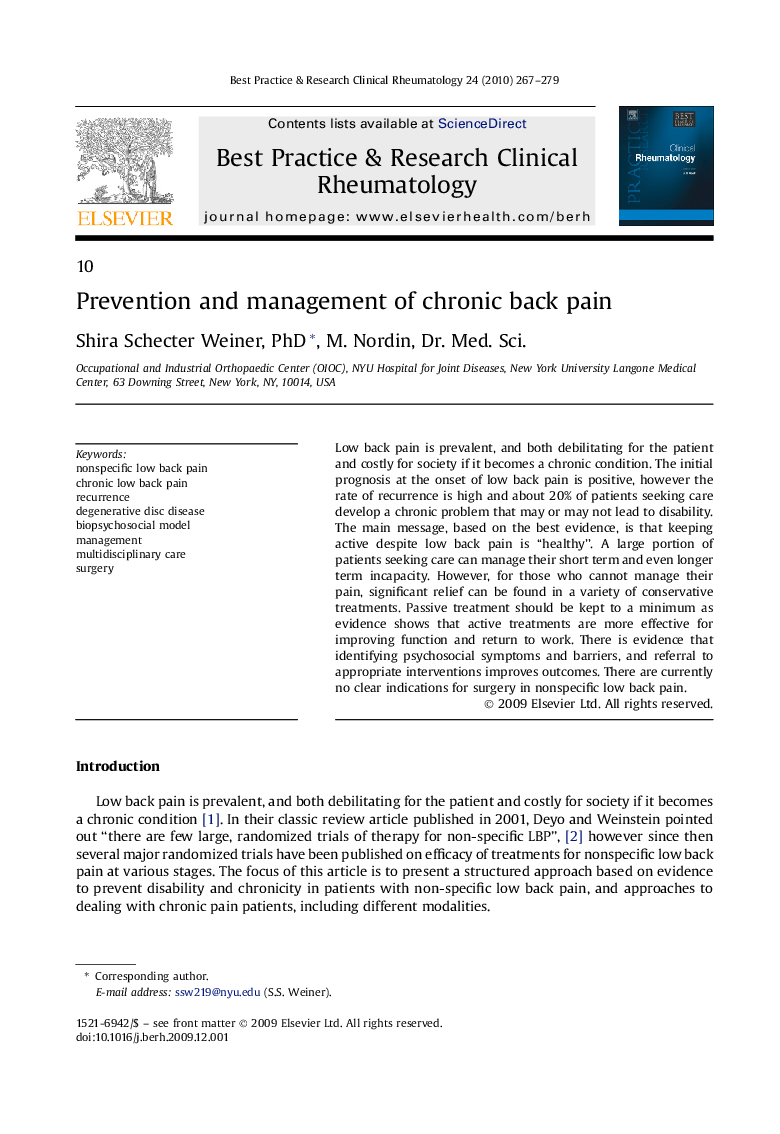| Article ID | Journal | Published Year | Pages | File Type |
|---|---|---|---|---|
| 6114782 | Best Practice & Research Clinical Rheumatology | 2010 | 13 Pages |
Abstract
Low back pain is prevalent, and both debilitating for the patient and costly for society if it becomes a chronic condition. The initial prognosis at the onset of low back pain is positive, however the rate of recurrence is high and about 20% of patients seeking care develop a chronic problem that may or may not lead to disability. The main message, based on the best evidence, is that keeping active despite low back pain is “healthy”. A large portion of patients seeking care can manage their short term and even longer term incapacity. However, for those who cannot manage their pain, significant relief can be found in a variety of conservative treatments. Passive treatment should be kept to a minimum as evidence shows that active treatments are more effective for improving function and return to work. There is evidence that identifying psychosocial symptoms and barriers, and referral to appropriate interventions improves outcomes. There are currently no clear indications for surgery in nonspecific low back pain.
Keywords
Related Topics
Health Sciences
Medicine and Dentistry
Immunology, Allergology and Rheumatology
Authors
Shira Schecter PhD, M. (Dr. Med. Sci.),
